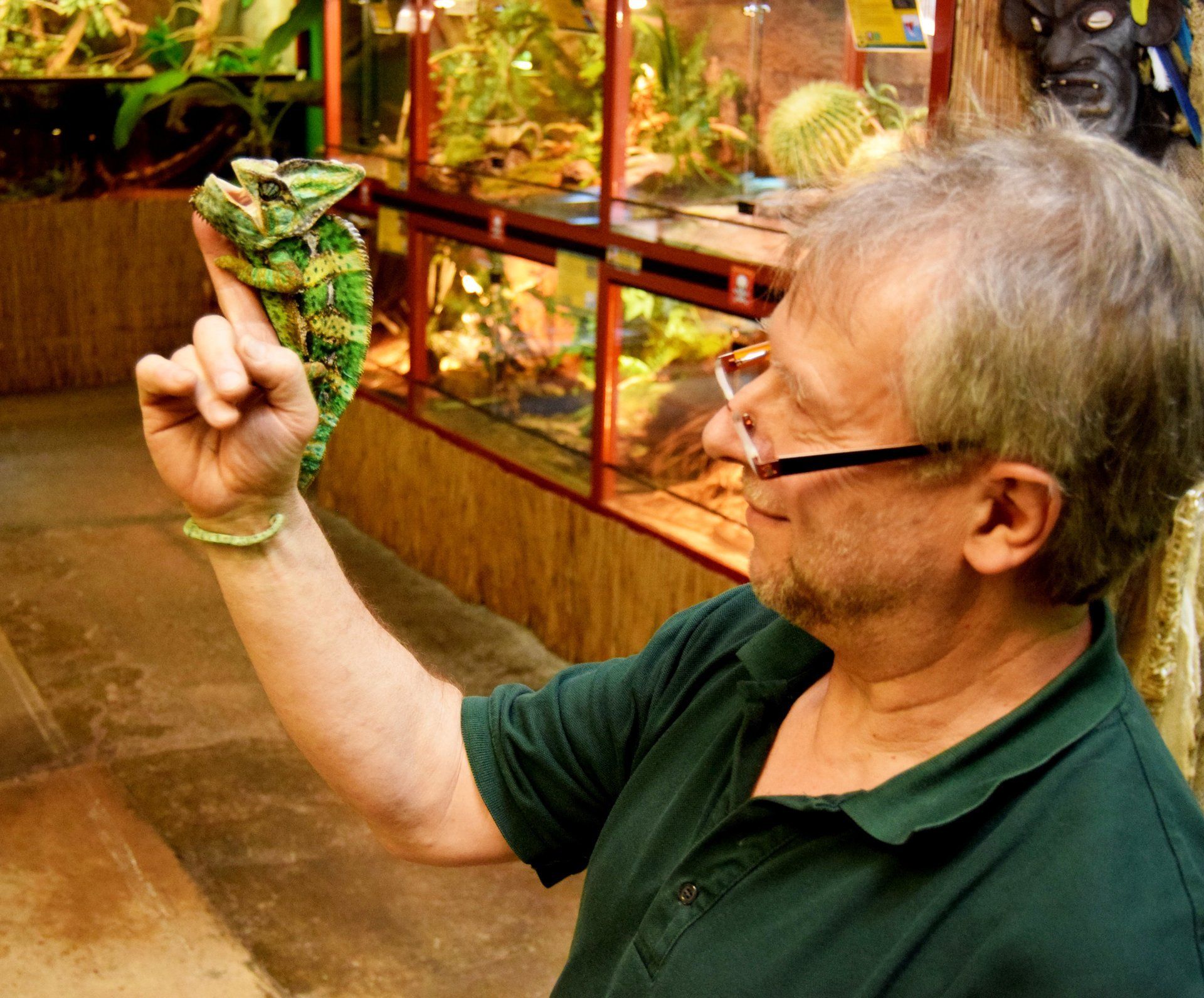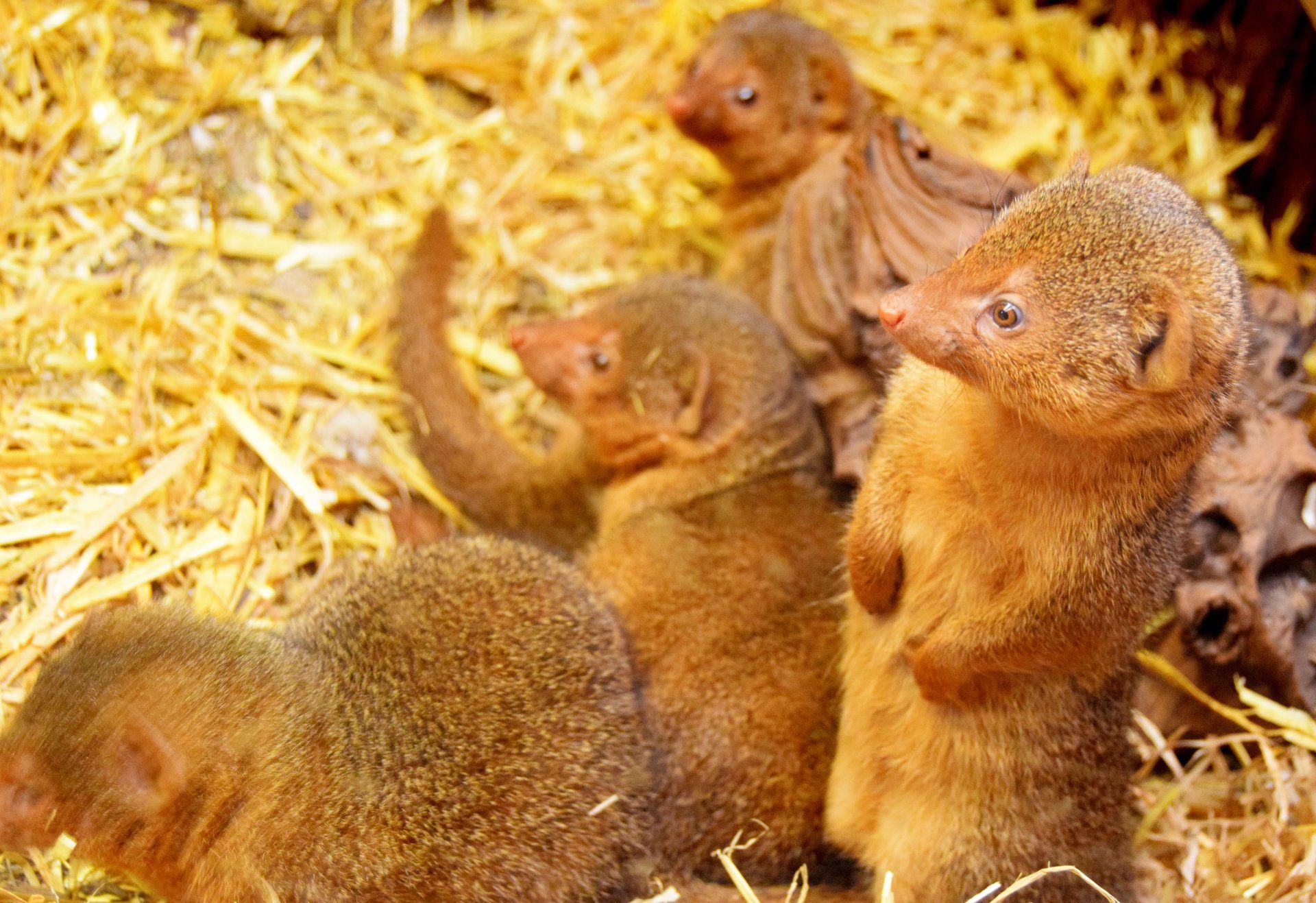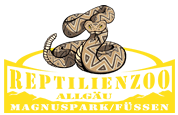We used the Corona period to renovate and expand and now have 3 times as much space as before.
Please note that in bad weather all parking spaces are quickly occupied and plan your journey accordingly.
About the zoo
Extract from the certificate, paragraph 1
"Mr. Dieter Graf is hereby certified in accordance with Section 4 No. 20a Clause 2 of the Sales Tax Act that the" Reptilienzoo Allgäu "reptile zoo in Füssen is performing the same cultural tasks as the zoological gardens run by the federal government, states, municipalities or municipal associations and animal parks. "
About the zoo
Dogs are not allowed

"Sofa exchanged for a terrarium"
by Katharina Müller (Allgäuer Zeitung)
Dieter Graf presents numerous exotic species in Magnuspark. Some animals already lived with him at home and are used to people.
Until recently, Dieter Graf's iguana was still sitting with him on the sofa and the cats contested the best place. Now the lizard presents itself in a large terrarium to curious zoo visitors in Magnuspark.
With the newly opened reptile zoo, Graf has realized an idea that he has been pursuing for years. However, it was not so easy to find a rental property with poisonous snakes and lizards, says the man from Füssen. It finally worked out on the former hemp plant and the reptiles as well as spiders, insects, mice and birds got a new home.
Just like the iguana, which Graf never gave a name, many other reptiles also lived with him. The zoo keeper has been running a rescue center for exotic animals for years, which have been confiscated, among other things.
So that the iguana is not so alone in its freshly planted glass home, it will soon have a female, says Graf. But not all zoo inhabitants can only be observed through panes. For example, on a tree in the middle of the room - well camouflaged - a chameleon sits on the lookout for prey. A few meters away, a large Madagascar day gecko lives on a long pipe that extends from the ceiling to the floor. "Usually he lives on palm trees and needs the vertical," says Graf. The gecko sits upside down in front of a white background, only when it is too busy or to sleep does it crawl into a hole in the ceiling.
On days when there is little going on, Graf also likes to let one of his water dragons roam free in the zoo. She's used to people too, he says. And on the weekends, a parrot sits in the entrance area and greets visitors.
Under no circumstances are poisonous snakes such as the spitting cobras and their newly hatched babies allowed to crawl around freely. Graf has no direct contact with them either.
"You have to use hooks and tongs when handling them," says the expert. In addition, your terrariums are locked and made of special safety glass. The pythons are less dangerous opposite, even if they hiss ominously when Graf pushes the terrarium pane to one side. The largest weighs 70 kilograms and has been nicknamed fat Berta since attending a kindergarten group, says Graf. He never gave the animals names, there are simply too many for that. In some terrariums you have to search for a while before you can discover their inhabitants. They are well camouflaged in the lifelike facility and don't move much, says Graf. That is why there are also small birds in some of the showcases for action and colorful eye-catchers.
Aside from lizards, birds, snakes, and turtles, visitors can also spot a tarantula, exotic insects such as the ghost, ornamental fish, salamanders, and small rodents. For every zoo inhabitant, a sign reveals important information such as the country of origin, the name, whether it is poisonous or not and whether its population is endangered.






